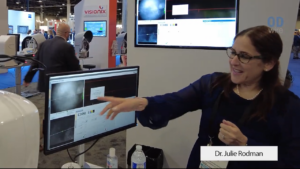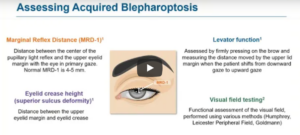Lewin Survey Finds Large Optometry Surpluses: An Editorial Analysis
Kenneth J Myers, Ph.D, OD
October 1, 2014
ODwire.org members may comment on this article here
Lewin Finds:
- Optometrists Total 39,600 in 2012
- Optometry Surplus of 12,672 in 2012
- Future Shortages of Ophthalmologists
- Replacing Ophthalmologists with Optometrists Still Leaves Large
- Optometry Surpluses
- Supply of Eye Care “Providers” is “Adequate”
The author would like to thank his many colleagues who generously took their time to read and comment upon drafts of this paper and Jennifer Spangler, Research Survey Manager at the AOA St. Louis, MO. Office for her assistance. Please address questions, corrections, or comments to myers.kenj@gmail.com.
Executive Summary
The 2012 Lewin National Workforce Survey of Optometrists gathered extensive demographic data about the average optometrist’s practice.
The survey found in 2012 the average optometrist could see 32% more patients (19.8/week) without adding staff or increasing hours reserved for patient care. This was the equivalent of 12,672 full-time surplus optometrists.
Lewin next developed three eye care supply-demand models. Models 1 and 2 ignored the 2012 surplus. Model 3 did not, but assumed a future “total” eye care market in which 1.36 surplus FTE optometrists fill each 1.0 FTE ophthalmologist shortage.
Model 1 (zero 2012 OD surplus) projected a surplus of 3,100 optometrists and a shortage of 5,400 ophthalmologists by 2025.
Model 2 used all surplus optometrists to replace ophthalmology shortages which reduced the ophthalmology shortage from 5,400 to 4,300 in 2025.
Model 3 recognized the 2012 surplus of 12,672 FTE optometrists and projected OD surpluses would fall to 4,400 FTE by 2025 if all ophthalmology shortages were filled with surplus optometrists and demand for eye care increased significantly. If optometrists did not fill all ophthalmology shortages and demand did not increase, the 2025 optometry OD surplus would be about 11,000 FTE.
The OD surpluses and OMD shortages will continue to increase until 2045.
All three Lewin Models are seriously flawed. But the 2012 surplus of 12,672 FTE optometrists found by the Lewin Survey must be addressed to mitigate its damaging effect on younger optometrists burdened by student loan debt.
The Survey found that of those under age 30, 65% practiced at two or more locations as did 40% of those aged 30 to 39. In fact, 11.5% of those under the age of 30 practiced at four locations.
Despite its flawed manpower models, the Lewin Survey report itself provided much needed data on the extent of the optometry surplus and its effect on younger optometrists. That Survey was the first to document there is a surplus of optometrists and to evaluate its impact on younger practitioners as shown by the high percentages of younger optometrists attempting to practice full-time by piecing together two or more part-time practice sites.
But Lewin’s total eye care supply and demand model, that uses the optometry surplus to replace future shortages of ophthalmologists, is highly implausible as explained in this analysis, as it assumes all future shortages of ophthalmology care will be provided by optometrists at the rate of 1.36 optometrists providing the same services as one ophthalmologist.
In the total eye care supply and demand Model 3, Lewin shows a surplus in 2012 of 12,672 optometry FTE that could only decline by 2025 to a surplus of about 4,400 if:
All ophthalmology shortages are filled by optometrists.
There is a large future increase in demand for eye care.
The author believes it more likely the current surplus will grown rather than decline by 2025 due to the untenable nature of the above assumptions.
Finally, thought must be given to the nature of the optometry surplus. The 2012 surplus of 12,672 is distributed across some 40,000 ODs and Lewin’s assumption this surplus FTE pool will be tapped to replace ophthalmology services and thus reduce optometry surpluses somewhat, ignores market place realities and licensing laws.
While a portion of ophthalmology shortages may be filled from the optometry surplus, it is likely those shortages will be filled by greater efficiencies, enhanced technical means and support practitioners affiliated with medical physicians and ophthalmologists. The surplus optometrists will likely remain as entropy within the “optometry market”, in competition with other optometrists which, due to population growth rates of only 0.87% per year, will produce increasing difficulties for younger practitioners attempting to establish viable independent office-based practices.
Lexicon
ACA = Affordable Care Act (Obama Care)
CHI = Children’s Health Insurance
Diabetes Demand = Expected demand for eye care due to its complications
OD = An optometrist
OMD = An ophthalmologist
ODe = A surplus optometrist providing all services of an ophthalmologist
at the rate 1.36 ODe FTE=1.00 OMD FTE.
Lewin Models 2 & 3 solve future shortages of OMDs by
assuming they are all replaced by ODe FTE. A 1.00 OMD
FTE shortage is replaced by (1.36) x (1.00 OMD FTE) = 1.36
ODe FTE using surplus optometry FTE.
Optometrist Defined FTE = In Lewin manpower Models 2 and 3, a hypothetical “total eye care market” is used in which ophthalmology supply and demand is converted into equivalent optometry supply and demand and all shortages of ophthalmologists are filled using surplus optometry FTE. The author uses ODe to refer to surplus optometrist FTE used by Lewin to fill ophthalmology shortages. See below.
D = Density = Numbers of optometrists per 100,000 population
Supply OD FTE = An average OD treating 2,956 patients per year
Supply OMD FTE = An average OMD treating 4,027 patients per year
Supply ODe FTE = A surplus OD FTE seeing 2,956 OMD patients per
year in place of an ophthalmologist [4,027/2,956 =
1.36]
Demand OD FTE = Demand for OD treatments in OD FTE
Demand OMD FTE = Demand for OMD treatments in OMD FTE
Demand ODe FTE = Demand for OMD treatments using ODe FTE
surplus at the rate 1.36 ODe FTE = 1.0 OMD FTE.
Surplus = The amount by which the supply of manpower exceeds the amount of manpower required to equal, or match, the demand or need for that manpower. Lewin measures supply, demand and surplus in “Optometry Defined FTE” in its Model 2 and 3 “total eye care markets”, in which an OD is assumed to supply the same services as an OMD except at the lower rate per year of 2,956 patients.
a, 1 OD FTE = services of one OD at rate of 2,956 patients per year
b, 1 OMD FTE = services of one OMD at rate of 4,072 patients per year
c, 1 Optometry Defined FTE= services of one OD = 1/1.36 = 0.74
OMD FTE = 2,956 ophthalmology or optometry patients per year.
FTE Surplus or Shortage
The surplus, or shortage, of ODs or OMDs expressed in FTEs of supply and demand for each respective provider type. ODe FTE denotes surplus OD FTE used to fill ophthalmology FTE. 1 ODe FTE = 1 OD FTE = 0.74 OMD FTE.
Surplus OD FTE Supply
Lewin’s optometry survey determined an average OD in 2012 could see 19.8 (32%) additional patients/week without additional patient care hours, staff or equipment. This “excess capacity” totaled 12,672 OD FTE in 2012.
Lewin’s Models 1 and 2 assumed the supply of OD FTE in 2012 equaled (matched) demand: ie, there was no surplus of optometrists in 2012.
Lewin’s Model 3, however, used the 2012 surplus OD FTE to fill all ophthalmology shortages which still leaves large future OD surpluses.
Impact of Increased Enrollments on OD
The driving force behind current surplus numbers of practicing optometrists began around 1990 as schools began to enlarge their enrollments and new schools began to open. Surpluses first began to appear around 1995.
For decades, the density D, of optometrists per 100,000, had been at about 10.0 but, by 1997, had reached 11.5 and then 12.8 at the time of the 2012 Lewin National Optometry Survey. This was a 28% increase in numbers of optometrists per 100,000 since 1997, which correlates well with the Lewin finding of a 32% “optometry excess capacity” in 2012. The small difference between 28% and 32% indicates there was “excess capacity” already present in 1997 as the Abt. Survey at that time did not ask optometrists how busy they were and merely assumed supply equaled demand at D=11.5.
The two projections of D beyond 2015 reflect graduation rates of 1,700 or 1,900 per year. Lewin assumed a future rate of 1,800 per year which will
result in D reaching 16.0. The author believes these future D values will create still larger surpluses of optometrists after Lewin’s end point of 2025.
Introduction
A: The Three Lewin Manpower Models.
Understanding the Lewin Eye Care Workforce Study requires careful study because Lewin employs three different, flawed, supply-demand models and makes varying, often unrealistic assumptions which require the reader to pay strict attention as to which projections correspond to which assumptions.
Only Model 3 recognizes an optometrist surplus in 2012, as Models 1 and 2 assume OD supply exactly equaled optometry demand in 2012.
Model 1 assumes zero optometry surpluses in 2012 and projects separate supply-demand data for optometrists and ophthalmologists that show a future OD surplus of 3,100 FTE and a 5,400 FTE OMD shortage in 2025.
[Figures 1, 2 and 3 below]
Figure 1 shows Lewin’s projected numbers of optometrists and resulting lower net FTE by Lewin assuming future entering optometrists would see fewer patients, a questionable assumption since entering optometrists have always seen fewer patients. As a result the Lewin supply projection is not compatible with other studies and underestimates future surpluses.
Figures 2-3 show Lewin Model 1 projections of an optometry surplus of 3,100 FTE and an ophthalmology shortage of 5,400 FTEE by 2025. They each assume zero optometry and ophthalmology surpluses in 2012.
Model 2







